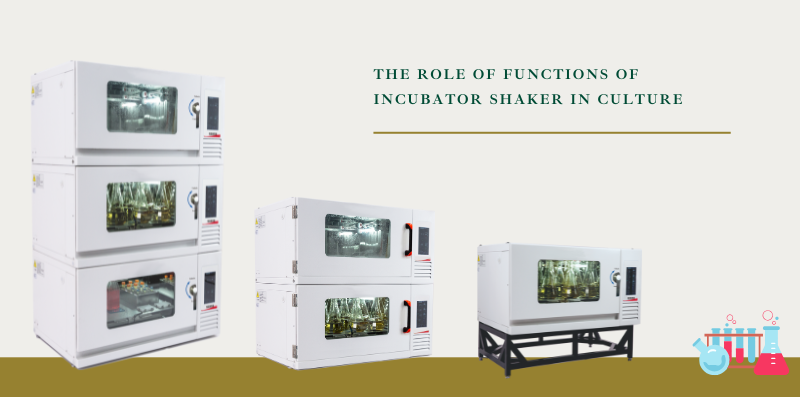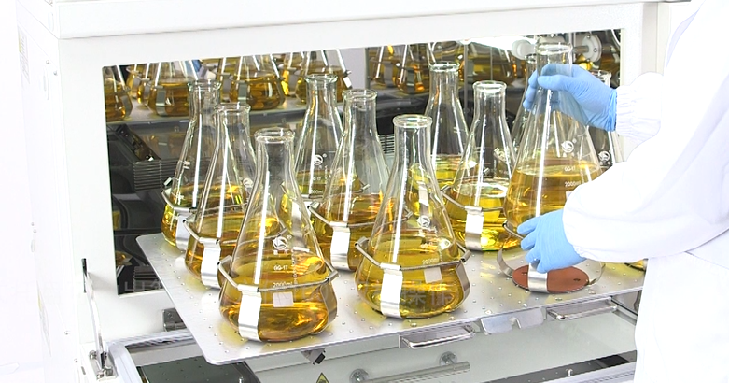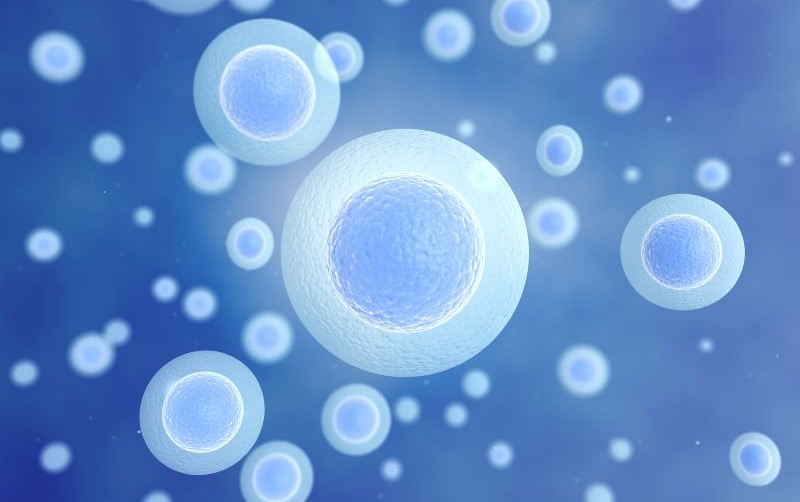Incubator shaker is a kind of equipment used to culture for bacteria or cells. Generally shaker has the function of shaking and constant temperature, and incubator shaker has more function like humidity and CO2 concentration. For better culture performance of shaker, we need to understand its various functions like: amplitude, frequency (speed), temperature control, humidity control, CO2 concentration control. We will first take a look at the information about amplitude, frequency (speed), and how it affects the cell/bacterial culture.

Amplitude, frequency (speed)
The amplitude, also known as the orbital diameter or oscillation diameter, refers to the diameter of the tray when it is in a circular motion, generally Ø3, Ø19, Ø26, Ø50mm, etc.
The frequency (rotational speed), that is, the speed of circular motion, can range from 0~1000rpm, or even higher.
In the use of incubator shaker, the choice of amplitude is very important because it directly affects the efficiency of oxygen transfer, that is, the efficiency of oxygen transfer from the atmosphere to the liquid. In general, the greater the amplitude, the more efficient oxygen transfer is, which is especially important for microbial cultures that require higher dissolved oxygen. However, the choice of amplitude also needs to take into account the specific needs of the experiment, such as cell culture may require a small amplitude to avoid damage to the cells, while chemical analysis and biological reactions require a certain intensity and frequency to ensure uniformity of reaction temperature and speed.

The oxygen transfer efficiency mentioned here can be expressed in terms of the Oxygen Transfer Coefficient. The rate constant of oxygen transfer from the gas phase to the liquid phase is described to evaluate the oxygen supply efficiency of a bioreactor under a given condition. Its size is affected by a variety of factors, including gas stirring strength, dissolved oxygen, liquid flow rate, liquid area, partial pressure of oxygen, and liquid properties. By effectively controlling the oxygen transfer coefficient, the productivity and energy utilization of the bioreactor can be improved.
The oxygen transfer coefficient is much lower in flasks than in bioreactors, so the oxygen transfer coefficient is an important factor in many cases affecting the amount of biological culture. In general, the better the media mix in flask, the higher the oxygen transfer coefficient. Amplitude and rotational speed can affect the mixing effect of the medium. Generally speaking, an amplitude of 1" (inch) can be used in all cultures, making it a veritable "wild amplitude". Therefore, it is common to find that in many cases the amplitude of the device is 1 inch, which is Ø25 or Ø26mm.
In addition, the choice of amplitude is also related to factors such as the type of experiment, the type of sample, and the number of samples.
For example, for experiments such as cell culture, a smaller amplitude can avoid harm to the cells, while in chemical analysis and biological reactions, appropriate amplitude and frequency are required to guarantee uniformity of reaction conditions. This indicates that the selection of amplitude needs to be finely adjusted according to specific experimental needs and conditions, such as the diameter size of the shaking culture vessel, the small diameter vessel uses small amplitude and high speed, and the large diameter vessel uses large amplitude and low speed, and the oxygen transfer efficiency mentioned here can be expressed by the Oxygen Transfer Coefficient, which describes the rate constant of oxygen transfer from the gas phase to the liquid phase. It is used to evaluate the oxygen supply efficiency of a bioreactor under a given condition. Its size is affected by a variety of factors, including gas stirring strength, dissolved oxygen, liquid flow rate, liquid area, partial pressure of oxygen, and liquid properties. By effectively controlling the oxygen transfer coefficient, the productivity and energy utilization of the bioreactor can be improved.

If the shear force is high and high dissolved oxygen is required, large amplitude and high speed can also be used to achieve the best cultivation effect. This requires high quality of the incubator shaker structure. Shakers consume energy when they are running, and long runs can lead to heat generation, which can affect the temperature and speed of the reaction. Therefore, it is necessary to choose a shaker with good heat dissipation performance and stable quality to ensure the shaking effect and experimental accuracy.
Therefore, the amplitude speed selection of the incubator shaker is essential to ensure the effective cultivation of microorganisms or other organisms in liquid media. By properly adjusting the amplitude and speed, the oxygen transfer efficiency can be optimized, which in turn affects the growth and metabolism of microorganisms. Therefore, amplitude is an important factor that cannot be ignored when selecting and using a incubator shaker.
There are also three points:
If the bioculture is only affected by the oxygen transfer coefficient, then choosing the appropriate amplitude will significantly increase the bioculture. However, it is worth noting that there are many factors influencing the amount of biological culture, and even if the appropriate amplitude is selected, the amount of biological culture cannot be guaranteed. Among the many influencing factors, even one or two factors that are not ideal, no matter how good the others, can limit the growth of biological cultures. For example, if the carbon source is the influencing factor, or the speed of the equipment is extremely low, no matter how the amplitude is selected, there will be no obvious effect.
The choice of amplitude should also refer to the size of the shake flask. In general, large flasks use large amplitudes and small flasks have comparatively smaller amplitudes. The shake flask between 2L~5L generally chooses 50mm amplitude, and the shaker flask between 25mL~2L chooses 26mm amplitude.
If the required rotational speed value is low, the large amplitude shaker generally cannot meet the culture requirements. At this time, the addition of surfactants can also be considered to improve the oxygen transfer coefficient.

It is hoped that the above detailed information about the amplitude and frequency of the thermostatic shaker will help you better understand the importance of these parameters for cell and microbial culture, and help you optimize the culture conditions and improve the success rate and reliability of the results. If you have any questions or need further support, please do not hesitate to contact us and we will be happy to assist you.